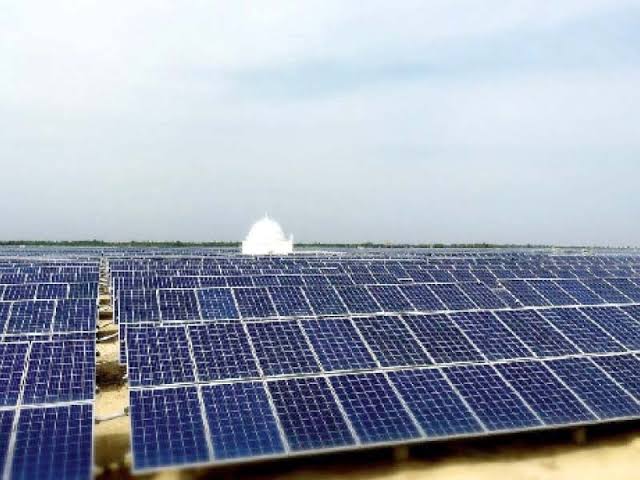Indus Earth Trust (IET), an organization promoting green energy, has given an entirely productive solution for residents of Ishaq Joki, a perfect settlement in the Sindh province of Pakistan.
Solar energy has always been a great energy source for ages. Engineers always try to utilize natural sources to produce energy. The 19- kilowatt mini-grids powered by solar energy have transformed people’s lives. Previously, people were facing long hours of power cuts and electricity failures during peak consumption in the summer.
According to China Economic Net, “villages were selected according to a needs assessment survey, while the villagers provided the land where the 19-kilowatt mini-grids were installed. Panels bred prosperity in this hamlet caressed by the breeze from the Arabian Sea”.

The National Electric Power Regulatory Authority (NEPRA) analysis shows that homes consume 50% of the total electricity delivered, and the demand is mainly driven by lighting and cooling.
Though, it is expected that the demand will increase to 234 TWh in 2030, in comparison to 106 Twatt-hour in 2020, representing a 121% increase due to the rise in temperatures from climate change.
Moreover, conflicts between Russia and Ukraine and the global supply crisis have badly impacted Pakistan’s energy issues.
In Fy2021-22, Pakistan’s fuel import bill skyrocketed to $23 billion, a 105% increase over the prior fiscal year.
The nation’s per capita electricity consumption of 644 kWh, which is only 18% of the global average and 7% of the standard for developed countries, is among the lowest in the world.
KTrade security analyst states, “Pakistan’s Solar energy market is expected to record a CAGR of 5% from 2022 to 2027. Which includes Met Metering Based Solar Installations and Power Generations growing by 102% and 108%, respectively”.
Pakistan was urged by a World Bank study in 2020 to quickly increase solar and wind energy “to at least 30% of electricity generation capacity” by 2030. Equivalent to around 24,000 MW, of which 630 MW was made up of Photovoltaic capacity.
On the other hand, China is also showing interest and helping by providing electricity to millions of places in remote areas through micro-power plants.
Whereas, out of the $144 million in foreign investment in PV plants in Pakistan,$125 million is from China.
KTrade Securities solar PV industry states, “Pakistan and China are a perfect match for collaboration on renewable energy, as China is a globally known giant in renewable energy technology. While Pakistan needs to move away from thermal to renewable for power generation”.
The Pakistan Solar Association (PSA) recently asked the federal government to ask SBP and other commercial, financial institutions to help with solar imports through an annual limit of $800 million. Pakistan faces electricity issues, and the renewable energy sector is growing rapidly.
However, the letter also states that the government has to promote local solar panel manufacturing to reduce reliance on imports. This will also in creating job opportunities for locals.
Hence, the success of the Indus Earth Trust project in Ishaq Jokio shows the potential of renewable energy in Pakistan.
Moreover, by embracing green energy, Pakistan will be able to cope with the crisis it faces due to the increase in energy demand.
Hence, the journey towards green energy is very challenging, but the continuous support of organizations like Inside Earth Trust and the government’s help will make it possible.
Read more:
Transparent Solar Panels Can Possibly Replace Windows in the Future
Netherlands Became Europe’s Solar Power Leader:How?












